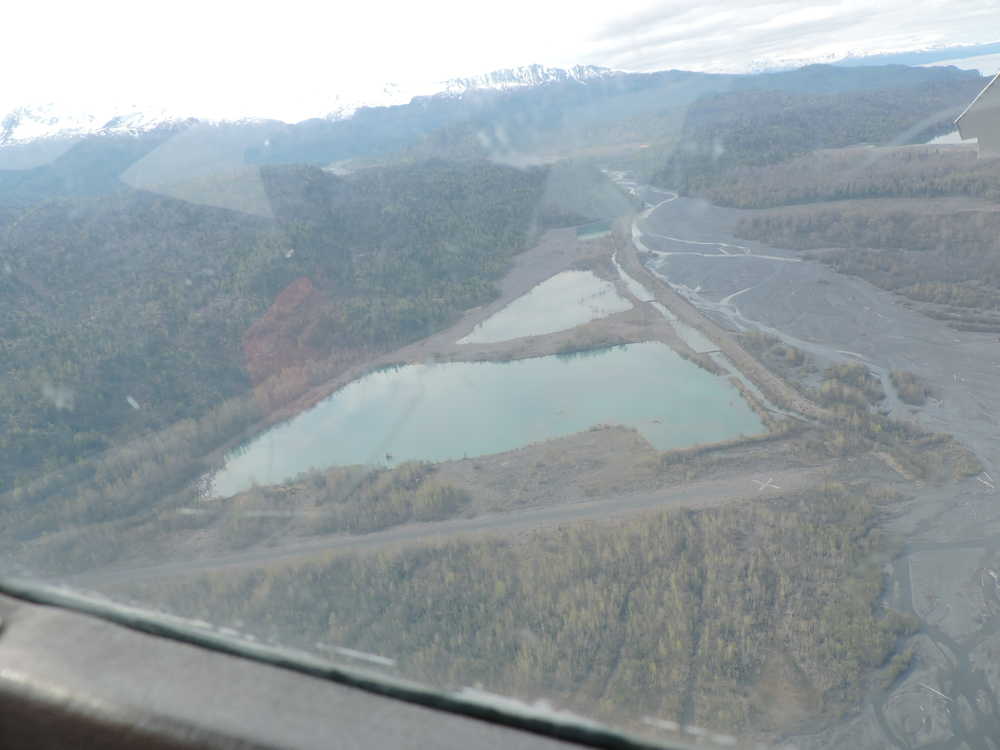Editor’s note: This article has been corrected to show that the ponds are at the mouth of the Martin River system, not at the head, as originally reported.
A proposal to introduce hatchery sockeye salmon to a stream system near Homer met with some opposition at the Cook Inlet Aquaculture Association’s Regional Planning Team meeting Wednesday.
The association presented the idea of introducing sockeye salmon from its Tutka Bay lagoon hatchery into a pond at the mouth of the Martin River system, an anadromous stream near the head of Kachemak Bay. Adding hatchery salmon that imprint on the Martin River could make the system salmon-bearing and add to the wild stock.
However, the system already has a small wild population, and geneticists with the Alaska Department of Fish & Game worried that introducing a large number of hatchery fish could wipe out a genetically distinct group of fish.
The stream currently bears a few hundred fish — the number fluctuates from year to year but stays between 150 and 300, said Ted Otis, a fishery biologist in the Commercial Fish division of Fish & Game. The population seems to be self-sustaining, and introducing up to 150,000 sockeye smolts into the ponds could endanger those fish, he said.
Gary Fandrei, the executive director of CIAA, said the organization began looking at the ponds as a good location for ripening. The projects at Tutka Bay lagoon and China Poot Bay require a bigger space for the fish to spend time in fresh water, and the Martin Ponds did not have a natural fish population and are big enough to serve the purpose, he said. CIAA is aware of the sockeye and trying to take them into account, he said.
The three ponds are not natural — they were built in the 1990s as mitigation ponds during the construction of the Alaska Energy Authority’s Bradley Lake hydroelectric plant, the largest in the state. The ponds were former gravel pits and later filled as salmon habitats.
The chance of the hatchery fish intersecting with the wild fish would occur in the bay. When the ponds were originally built, the drainage into Kachemak Bay was merged with the Martin River. However, because the river mouth migrates across a delta, the two drainage points separated, Fandrei said. The ponds themselves are not connected to the river.
“That river moves around, like rivers do in a delta,” Fandrei said. “It’s pushed gravel in front of what used to be the discharge point. It now goes into a different creek system.”
CIAA proposed to transport fish to be introduced into the lower pond for imprinting only, with expected return in 2018 or 2019. While waiting for returns, the organization would collect 6,000 broodstock from Tutka Bay lagoon for transport to the Martin Ponds to allow them to ripen there. Two temporary weirs would be constructed to keep the fish in the lower pond.
Several members of the Regional Planning Team raised questions of the plan because of the native sockeye population. A general rule for the genetics team is 400 fish, and this population might fall below that, said Sam Rabung, the Fish & Game coordinator with the Division of Commercial Fishing.
“I wondered, at what point does it become bottlenecked from a genetic standpoint?” Rabung said.
Others argued that introducing the hatchery fish is of more benefit to the state than preserving small fishing streams. David Martin, a CIAA director, Regional Planning Team member and the president of the United Cook Inlet Drift Association, said the state does not have enough money anymore to preserve all small resources when it could be put to use.
“It sounds like if there are (a few) fish in the system, they’ll kill any project that we have going in that lake,” Martin said. “Is it enough to want to preserve their genetic integrity?”
He said the genetics department’s position has no official standard and is inefficient, allowing them to change their minds on what to preserve without any official backing. Matt Miller, the Fish & Game coordinator with the Division of Sport Fish in Soldotna, said the department has made adjustments over time on suggestions about standards.
“There are very few black and white answers in genetics. We’ve had review because of this organization where we go back and do review and say, ‘They’re right, that’s probably not the best practices,’” Miller said in response to Martin. “And we’ve changed our stocks, as you guys know.”
The main problem is lack of data in this case. The Martin River is too small a stream system for regular surveying, so it is difficult to tell how many fish return every year. Otis said there were only a few reports on the river, but they might be able to draw from other reports on the sockeye populations in the Kachemak Bay region.
The other concern raised was the salmon populations in the nearby Bradley River and Battle Creek systems, both of which have native sockeye populations. Fish & Game does not currently conduct studies on straying patterns for salmon. The CIAA expects between 6,000 and 10,000 salmon to return to the system after harvesting activities.
Rabung asked if developing a brood stock from the native sockeye in the Martin River system was possible.
Glenn Hollowell, a fisheries biologist with the Division of Commercial Fishing and a member of the Regional Planning Team, said the native stock was likely genetically discrete and is geographically difficult to access — they rear in Red Lake, which is several miles up the river. The planning team will revisit the proposal in the spring, but it is currently planned for a 2016 smolt introduction and release.
Reach Elizabeth Earl at elizabeth.earl@peninsulaclarion.com.

